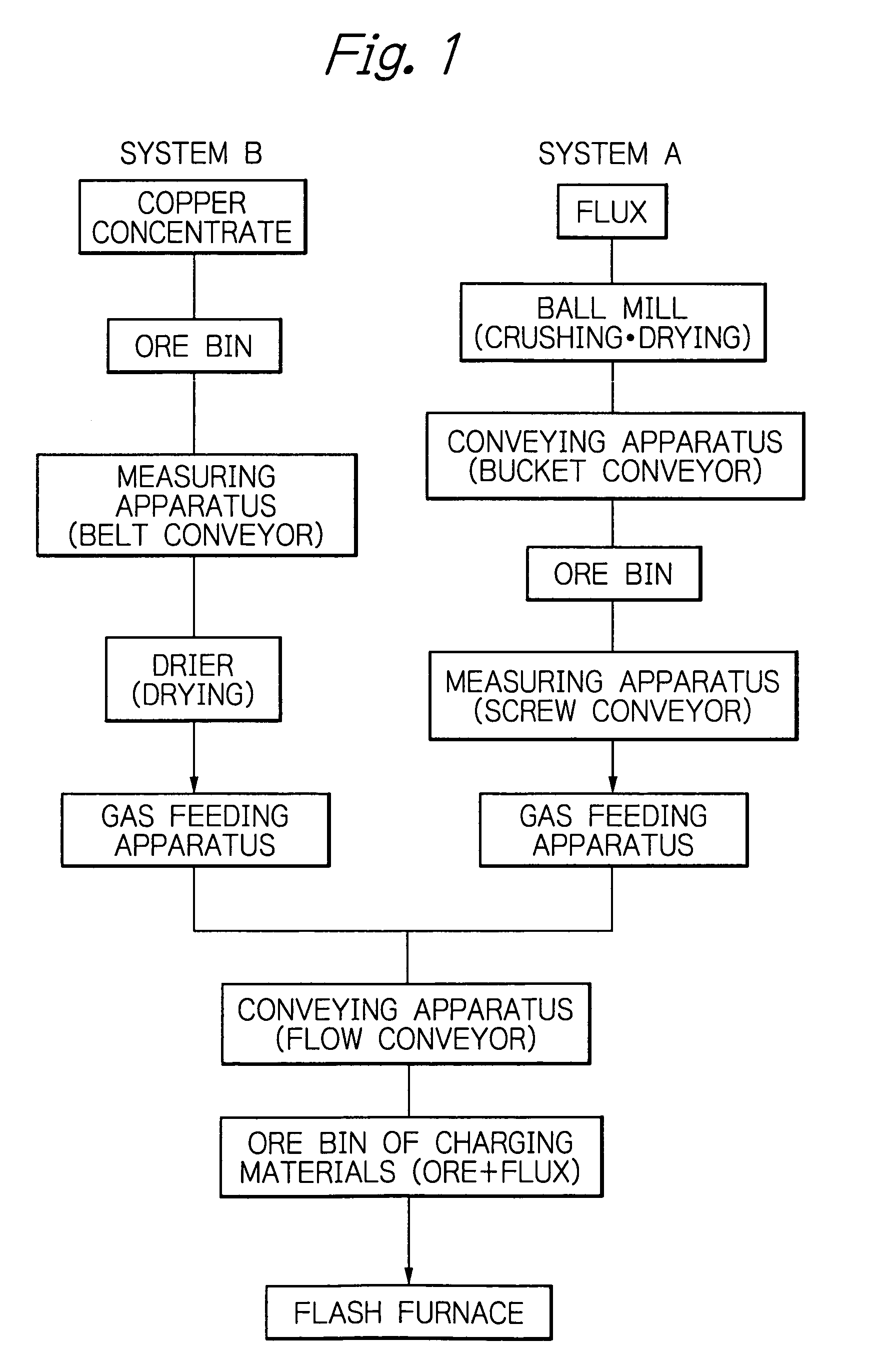Method of operating non-ferrous smelting plant
a smelting plant and non-ferrous technology, applied in the direction of reverberatory furnaces, furnaces, grain treatment, etc., can solve the problems of ineffective operation, two parallel drying and conveying systems are detrimental, and the production amount of non-ferrous metal can be increased, the crushing speed is enhanced, and the effect of easy operation
- Summary
- Abstract
- Description
- Claims
- Application Information
AI Technical Summary
Benefits of technology
Problems solved by technology
Method used
Image
Examples
Embodiment Construction
[0039]The operation method according to the present invention is further described with reference to the flow sheet of FIG. 1. In FIG. 1, the first and second systems are denoted by A and B, respectively.
[0040]In the present invention, the copper concentrate and the flux are conveyed through different systems to a location directly before a flash furnace and then charged into the flash furnace. According to the prior art, a predetermined amount of copper concentrate measured and fed from its ore bin and a predetermined amount of the flux measured and fed from its ore bin are conveyed through the same single system, directly before the flash furnace. The flow sheet shown in FIG. 1 corresponds to the operation methods (1) and (2), mentioned above, and are exactly the same as the conveying systems of the present applicant at the present time. In other words, none of reconstruction, modification or change is carried out at all. If necessary, a feeding apparatus of copper ore provided by...
PUM
| Property | Measurement | Unit |
|---|---|---|
| temperature | aaaaa | aaaaa |
| particle size | aaaaa | aaaaa |
| temperature | aaaaa | aaaaa |
Abstract
Description
Claims
Application Information
 Login to View More
Login to View More - R&D
- Intellectual Property
- Life Sciences
- Materials
- Tech Scout
- Unparalleled Data Quality
- Higher Quality Content
- 60% Fewer Hallucinations
Browse by: Latest US Patents, China's latest patents, Technical Efficacy Thesaurus, Application Domain, Technology Topic, Popular Technical Reports.
© 2025 PatSnap. All rights reserved.Legal|Privacy policy|Modern Slavery Act Transparency Statement|Sitemap|About US| Contact US: help@patsnap.com



